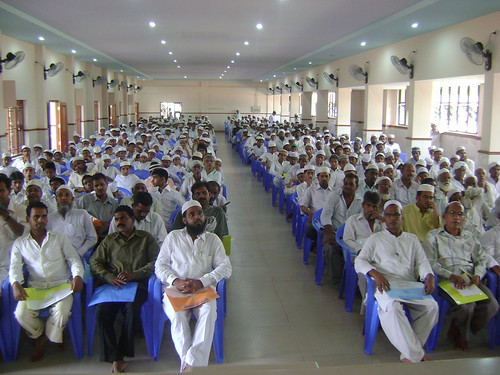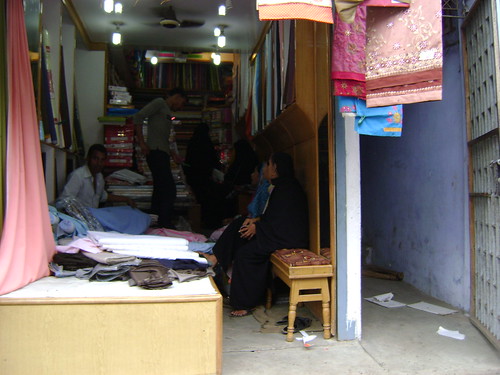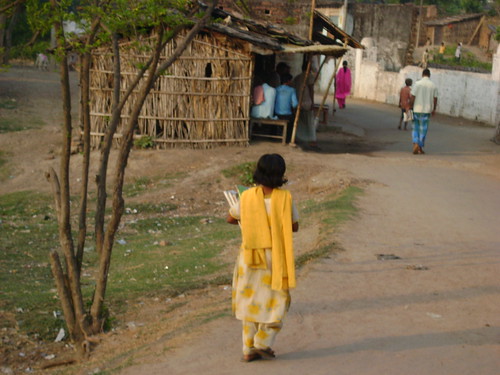By Kashif-ul-Huda, TwoCircles.net
In the name of minority welfare, Government of India spends about Rs. 5000 crores annually. On the face of it, this big amount and schemes and programmes gives the impression that government is sincere but dig little deeper and find out that government is anything but.
National Minorities Commission Act, 1992 has notified Muslims, Christians, Sikhs, Budhists, and Parsi as minority communities. Muslims form 73% of the minority population. Naturally, most of the schemes for minorities are designed keeping in mind educational and economic backwardness of the Muslims.
Estimate of annual aid of Rs. 5000 crores is very liberal, as it takes into account assets of Maulana Azad Education Foundation and National Minority Development Finance Corporation (NMDFC). Ministry of Minority Affairs annual budget is barely 1000 crores. Now let’s take the higher of the two figures – Rs. 5000 crores and divide that by the conservative estimate of Muslim population in India, which is 15 crores. What we get is a paltry sum of Rs. 333/head. Let’s assume that 20% of the Muslim population is rich or upper middle class and they do not and should not get any fund. If we do the math again we get Rs. 417/head.
Of course, if even this amount was spent properly it would have led to some benefit to the community. Government schemes designed for minorities are not implemented sincerely and in many cases funds meant for minorities are diverted.
Last week, there were two press conferences in Assam- one organized by Assam United Democratic Front (AUDF) and another one by Char- Chapori Sahitya Parishad. Both groups alleged that funds meant for minority areas were diverted for other purposes.
Anwar Hussain, general secretary of Char- Chapori Sahitya Parishad claimed that Assam Government has allotted Rs.6.5 crore for the construction of a 100 bed hospital at Chamguri, Nagaon district and preliminary construction work has already started. Chamguri is inhabited by only 4% of people belonging to minority community. Assam Government adopted proposal for allotting Rs. 50 to Kaliabor College. It is found that Kaliabor College has only 18.8% student belonging to minority community. Anwar Husain also claimed that there is wide spread corruption in allotment of hand pumps for the district of Barpeta. He regretted that government has not spent any amount for the rehabilitation and compensation for about 5005 families mostly victim of communal and ethnic riots, taking shelter at relief camps in the district of Kokrajhar, Bongaigaon, Chirang etc for last 16 years.
Assam United Democratic Front that won 10 seats in the last assembly elections and its president Badruddin Ajmal won a Lok Sabha seat in the last election also took notice of the “gross violation” of the government guidelines on the use of funds meant for minorities.
AUDF listed some examples of the diversion of funds allocated for minorities:
(a) in Samaguri GP (less than 5% minorities) – 6.5 Crore
(b) Kaliabor College (only 18% Minorities students) – Rs. 50 Lacs
(c)Shankardev Nagar (less than 1% Minorities) – Rs 5.32 Lacs)
(d) more that 4 Crore to Nagaon ITI which is already under World Bank Scheme and have less than 10% minorities students.
Ministry of Minority Affairs
This diversion of funds is possible because Ministry of Minority Affairs itself makes it possible. For instance, a letter dated December 26th, 2008, Mr. AK Srivastva, Under-Secretary notifies about the sanctioning of the amount of 63 crores for Barpeta district of Assam. The letter directs the Accounts Officer under the ministry to release 31 crores under various schemes meant for the minorities of Barpeta. Copies of this letter are sent to the concerned departments of the Assam government. For each of the projects that are sanctioned, the Ministry issues instructions for the state government. This is where it gets interesting and provides mechanism for legally diverting funds away from the minorities.

For Indira Awas Yojana, the Ministry of Minority Affairs directs that “the State will ensure that 20 BPL families per village in 50 villages per block having the highest proportion of minority population would be selected.” So, a creative administrator can easily identify villages and families with non-minority population as long as the block itself has a high number of minority populations.
If there is any confusion, a second guideline gives it the legal cover. It states that the “BPL families figuring in the wait list, even if they belong to communities other than the minority communities, would be selected in the order of their ranking in the list.”
In other words, funds allocated for minorities are released by the Ministry of Minority Affairs with the instructions that it can and should be spent on non-minority on the basis of some other wait list and poverty level that has nothing to do with the ministry itself.
All this is against the “Guidelines for Preparation of Multi-sectoral District Development Plans for Minority Concentration Districts,” where under Clause 7.1.(iii) of the guidelines it reads: “…the funds provided for the MCDs are additional resources for these districts do not substitute State Government funds already flowing to the districts.”
Of course, this instruction is not unique to Barpeta. Similar instructions accompany all the grant-in aids released by the Ministry for 2008-09. All the local administrators have to show that the block or village they have selected has minority population. Though the building of school, toilets, aangan wadi, and hand pumps may or may not benefit the minorities at all.
National Minorities Development & Finance Corporation (NMDFC)
Set up in 1994, NMDFC focus on the economic development of minorities. It provides funds to minorities for self-employment, education, etc. With a share capital of 850 crores, it has the power to bring about changes among the Muslims by increasing the entrepreneurship by targeted loan schemes.
But out of 850 crores it has able to raise only 676 crores. 65% of the share capital is Government of India’s responsibility, 26% of State Governments and Union Territories and 9% by organizations and individuals interested in the welfare of minorities. While Government of India has met 98% of its contributions only 59% of state contributions are in. Most pathetic is 76.50 crores contributions that was supposed to be raised from organizations and individuals, only 1 lakh has been raised so far.
Only Delhi, Himachal Pradesh, and West Bengal have paid 100% of their contributions. Some of the worst offenders are Punjab (20%), Tamil Nadu (35%), and Uttar Pradesh (19%).
Even 676 crores could impact minorities if schemes are properly implemented, but this is hardly the case. NMDFC depends on State Channelising Agencies (SCAs) which are nominated by the state governments. It also has a network of 200 NGOs through out India. Having to work through SCAs impacts the effectiveness of NMDFC’s programmes.

96% of the funds disbursed by NDFMC is through the Term Loan Scheme which makes available loan of upto Rs. 5 lakhs. Corporation annually disburses on an average 10 crores under the Term Loan Scheme. For the last 5 years it has benefitted 147,820 people distributing 57 crores.
Micro Finance Scheme has distributed 6 crores benefiting 79,781 people in the last 5 years.
Ranganath Misra Commission report had this to say about NMDFC: “…the total flow of credit from the NMDFC is comparison to other financial institutions is extremely small. This limits the impact of NMDFC assistance on the economic progress of minorities. Moreover, obtaining a guarantee from the State government remains the biggest hurdle to getting a loan from the NMDFC. Also, due to financial constraints, the state governments are reluctant to guarantee loans.”
Hostages to the SCAs, both these flagship schemes have been implemented erratically. Out of 27 states and UTs that participated in Term Loan Scheme, only Kerala shows some consistency in distributing money under this scheme. Figures for the rest of the states show inconsistency of participation. 16 states in one or more years have no distribution against their names. Bihar, for example, distributed 8 crores in 2004-05, nothing in 2005-06, and 3 crores in 2006-07. Another example is Uttar Pradesh which has not distributed any money since 2006-07.
Similar is the case with Micro Finance Scheme, 19 states had one or more years of no disbursement at all. Clearly, success of NMDFC is dependent on the cooperation of the SCAs and NGOs, Corporation does its part to keep these organizations happy.
In addition to 1% extra interest paid to SCAs, Corporation also pays them over Rs. 1 crore in the name of infrastructure development. Over 40 lakhs was given in interest-free loans in 2006-07 to benefit the NGOs. All this money is meant for channelizing agencies and not minorities. These NGOs also get financial support to help in loan recovery. But recovery has been only around 57%.
Not only poor performance, some NGOs unlawful practices has led the NDMFC to take legal action against them. 51 NGOs are facing legal suits by the Corporation to recover over 1.8 crores.

Scholarships
The Ministry of Minority Affairs has three types of scholarships: pre-matric, post-matric and merit-cum-means scholarship for minority students. About 6 lakhs students are to benefit from these scholarships every year.
But just like other schemes of the government, it wasn’t easy for the intended beneficiaries. Six pages long complicated application was only available in English. Application requires six additional documents, two on stamp papers. Many poor and rightly deserving students are unlikely to have the resources and expertise necessary to correctly submit all the necessary paperwork. A number of students who did qualify complained of not getting the money that was promised to them.
Solution
Solution to all these problems is not to have another commission to investigate. Solution is also not in having other scheme and programmes. Muslims can raise funds and establish schools, colleges, and funds for self-help groups but it can not match the funds required to meet the community needs in the entire length and breadth of India.
Muslim groups need to monitor these schemes at the grass root level to ensure implementation. Awareness campaigns among Muslims are required to teach them about not only government schemes and their rights but also their duties as citizen of India.
Long standing demand of the Muslims to setup a Joint Parliamentary Committee (JPC) to monitor the implementation of these schemes will also be a step in the right direction. There are plenty of solutions but it all depends on how sincere Union and state governments are for minority welfare.
Links:
http://minorityaffairs.gov.in/
http://www.nmdfc.org/
